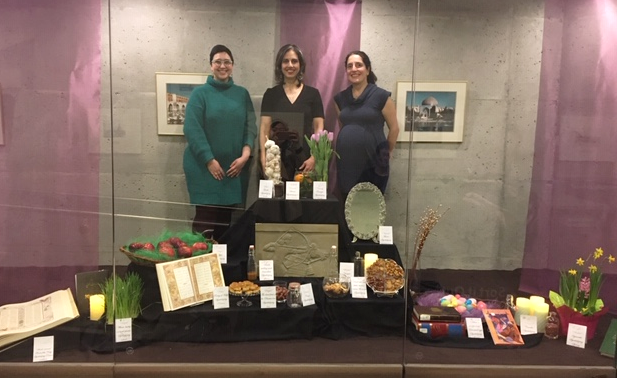 Due to conditions with the COVID-19 outbreak, the IGNITE Book club: Annahid Dashtgard in conversation with Shirin Eshghi proceeded as scheduled on March 12 but without a public audience. The conversation was captured in order for anyone interested to hear Dashtgard speak about her book, Breaking the Ocean: A Memoir of Race, Rebellion, and Reconciliation.
Due to conditions with the COVID-19 outbreak, the IGNITE Book club: Annahid Dashtgard in conversation with Shirin Eshghi proceeded as scheduled on March 12 but without a public audience. The conversation was captured in order for anyone interested to hear Dashtgard speak about her book, Breaking the Ocean: A Memoir of Race, Rebellion, and Reconciliation.
You can view this conversation HERE.
Organized by the UBC Equity & Inclusion Office, IGNITE Book Club is designed with and for racialized faculty to allow for the exploration and discussion of memoirs written by renowned racialized authors. Check out more information HERE.

L to R: Sadaf Ahmadbeigi, Annahid Dashtgard, Shirin Eshghi Furuzawa
The talk was meant to be followed by a reception with performances to celebrate Nowruz, the Persian New Year. Although the performances were also cancelled due to Covid-19 concerns, Sadaf Ahmadbeigi, our ARL Mosaic Intern, was still able to mount a display featuring a haft-seen spread to celebrate Nowruz. The Haft-Seen (Seven “S”s) is an arrangement of seven symbolic items whose names start with the 15th letter in the Persian alphabet that correspond to S in English. As you see in our display, these items are as follow:
Sabzeh (سبزه) – wheat, barley, mung bean, or lentil sprouts grown in a dish which symbolizes rebirth and growth
Samanu (سمنو) – wheat germ sweet pudding, symbolizing power and strength
Senjed (سنجد) – Persian olive, symbolizing love
Serkeh (سرکه) – vinegar symbolizing patience
Seeb (سیب) – apple, symbolizing beauty
Seer (سیر) – garlic, symbolizing health
Somāq (سماق) – sumac, symbolizing sunrise
The spread is traditionally set up with a mirror as a symbol for self-reflection, coloured eggs, symbolizing fertility, candles to bring light to our lives, and books, especially poetry books symbolizing wisdom and tradition.
Nowruz celebrations start at the exact moment of spring equinox, and conclude 13 days afterwards. Today marks the final day of the New Year celebrations, and it is customary to throw away the Sabzeh, the sprout that we have grown over the past two weeks. It has special significance this year in the context of Covid-19, as the belief is that the Sabzeh will have collected all the sickness, pain, and suffering of the past and of what may still lie ahead. Throwing the Sabzeh away reflects a wish to start afresh.

